Monday☕️
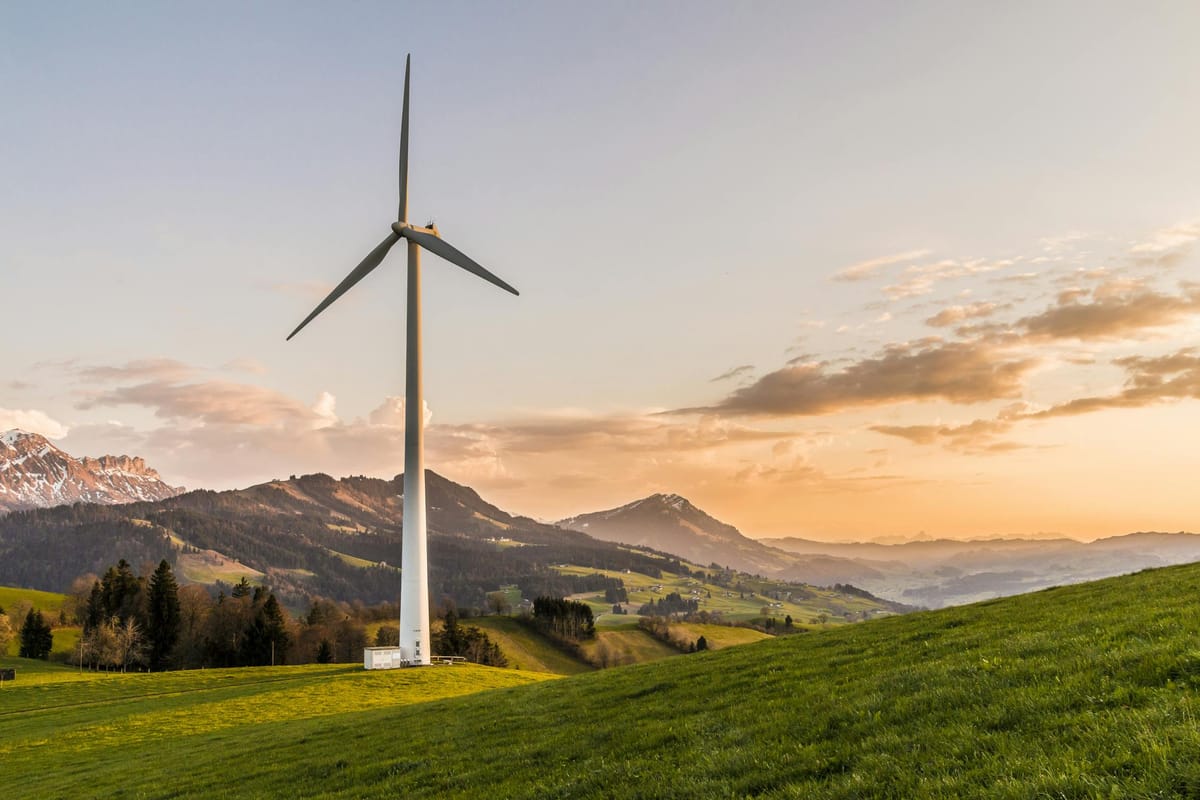
Economics & Markets
- Yesterday’s commodity market:
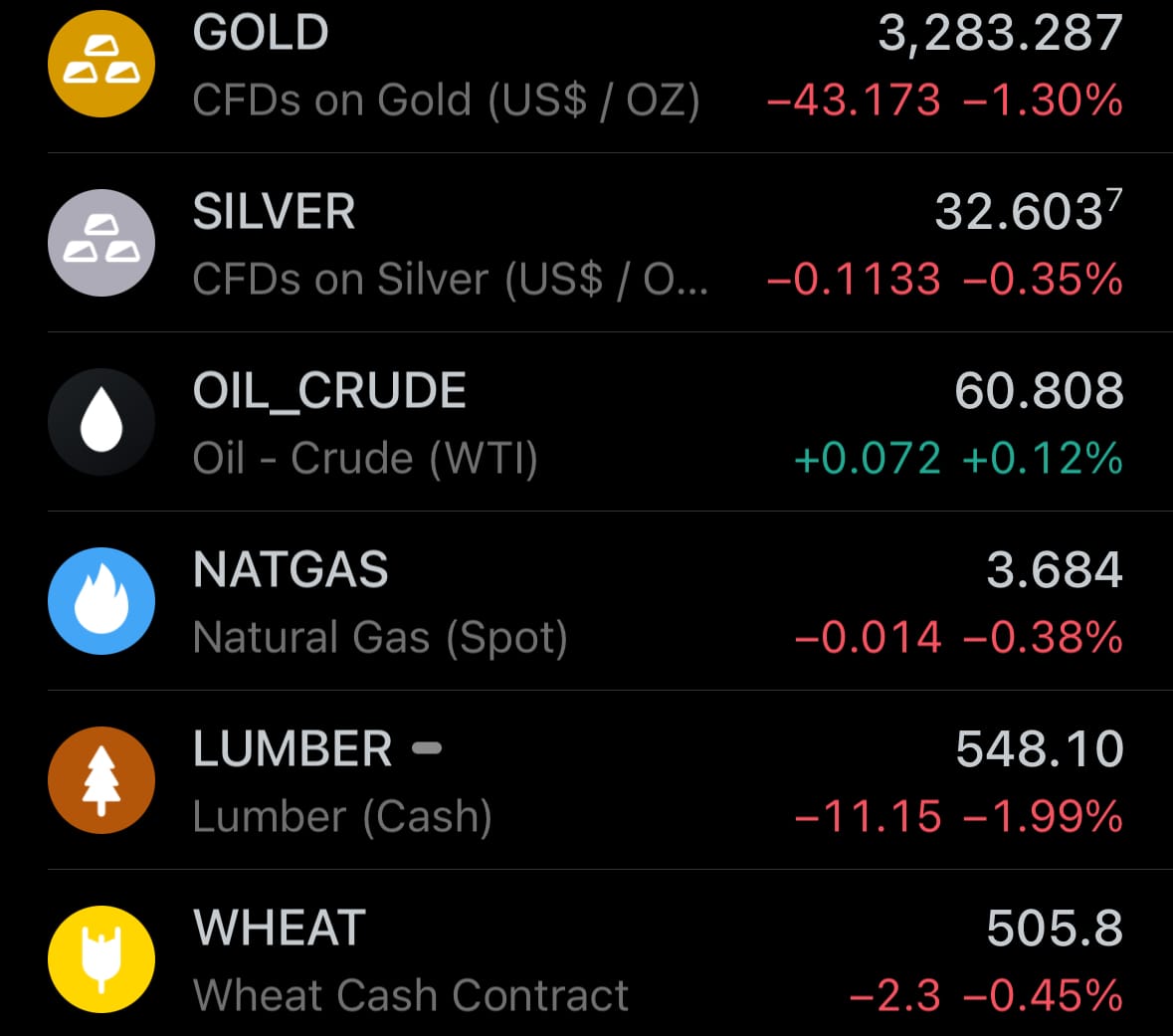
- Yesterday’s crypto market:
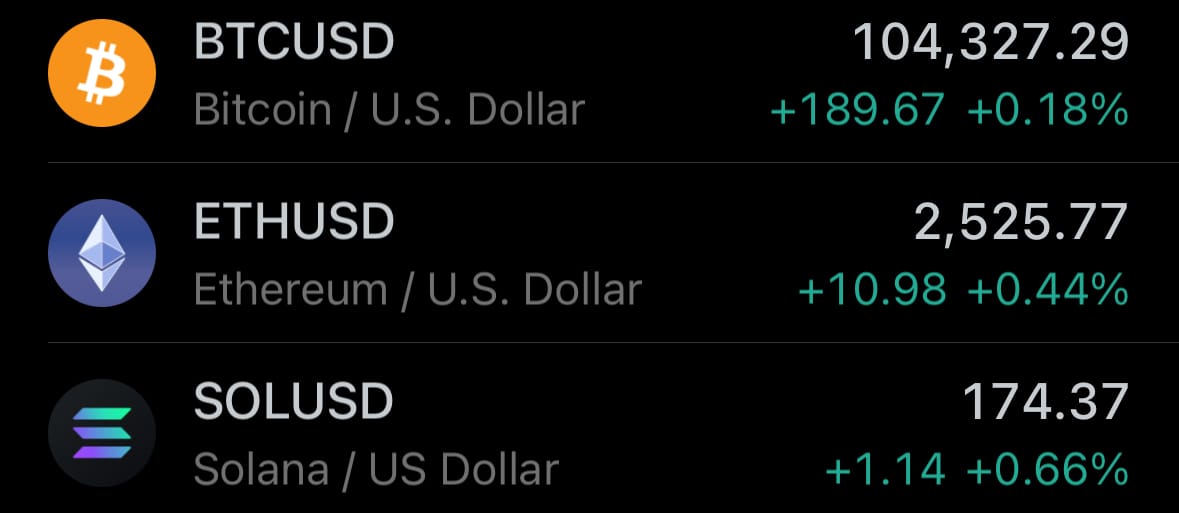
Geopolitics & Military Activity:
- On May 10, 2025, India and Pakistan agreed to a full and immediate ceasefire following four days of intense conflict, the worst in decades between the nuclear-armed neighbors. The truce, announced by U.S. President Donald Trump after mediation involving 36 countries, aimed to halt cross-border strikes that began after a militant attack on April 22 in Indian-administered Kashmir killed 26 tourists, which India blamed on Pakistan-backed groups—a charge Pakistan denied. Both nations confirmed the ceasefire, effective from 5:00 p.m. IST (1130 GMT), with military hotlines activated and plans for further talks on May 12.
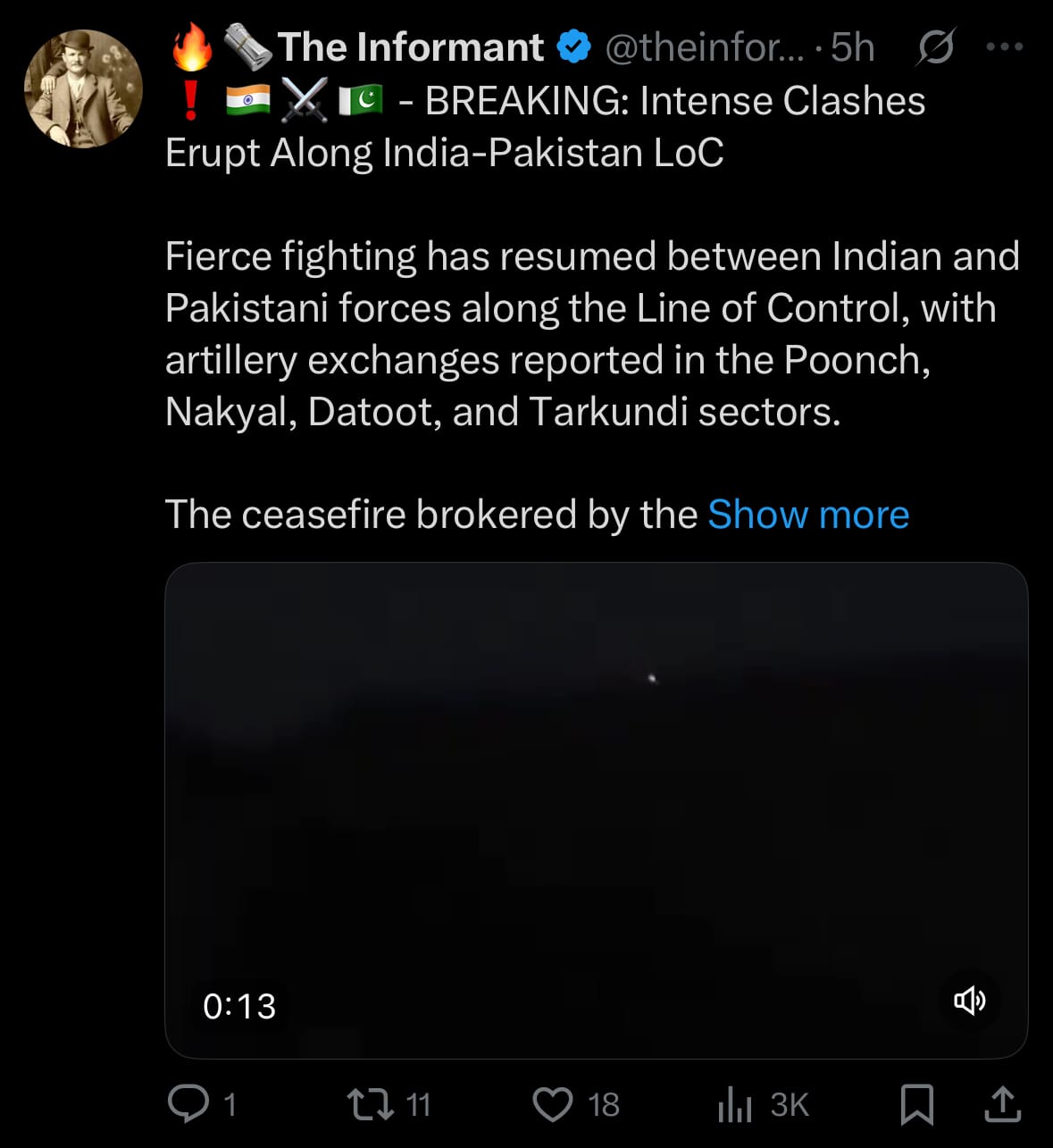
- Despite the agreement, fighting resumed within hours, with both sides accusing each other of violations. Explosions and artillery fire were reported in Srinagar and Jammu in Indian-administered Kashmir, and Pakistan reported clashes in its administered areas. Indian Foreign Secretary Vikram Misri claimed Pakistan breached the truce with drone activity and shelling, while Pakistan’s Foreign Ministry countered that India initiated the violations, though both claimed commitment to the ceasefire. By May 11, the truce appeared to hold more steadily, but tensions remained high, with India maintaining high military readiness and both nations trading narratives of victory, signaling that underlying issues, particularly over Kashmir, remain unresolved.
Environment & Weather:
- Yesterday, May 11, 2025, heavy flooding struck the Loa Janan area of Kutai Kartanegara in East Kalimantan, Indonesia, as reported by local authorities and residents. Water levels reached up to waist height for an average adult, submerging homes, roads, and infrastructure, and forcing many residents to evacuate or seek higher ground amidst ongoing rainfall. Emergency services were quickly deployed to assist affected communities, with residents urged to stay safe as response efforts continued.

- Yesterday, May 11, 2025, a magnitude 6.0 earthquake struck Northern Sumatra, Indonesia, with an epicenter at a depth of 89 km, according to the German Research Centre for Geosciences (GFZ). The quake, felt across parts of Indonesia and as far as Malaysia’s west coast, including Penang, prompted residents to evacuate buildings but caused no immediate reports of damage or casualties, likely due to its intermediate depth reducing surface shaking intensity.
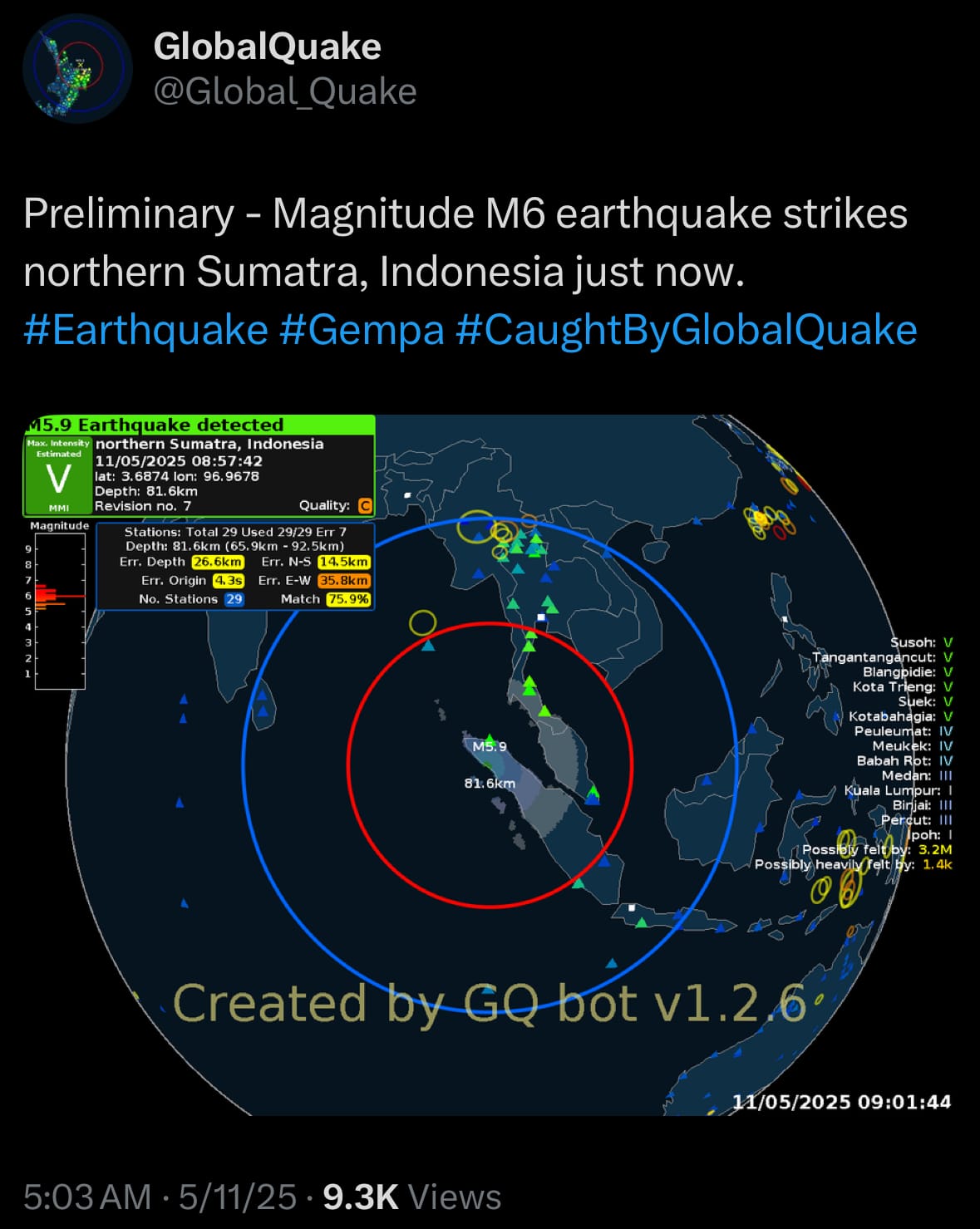
- The tremor occurred in a seismically active region along the Pacific Ring of Fire, near the boundary of the Australian and Sunda tectonic plates, which frequently causes earthquakes in Sumatra. Indonesia’s Meteorology, Climatology, and Geophysics Agency confirmed no tsunami risk, and while the quake raised concerns among locals, its depth and location minimized significant impact, though the area remains prone to larger, more destructive seismic events based on historical patterns.
Space:
- On May 11, 2025, Yaogan 40 Group 02 launched at 9:27 a.m. EDT (1327 GMT) from Taiyuan Satellite Launch Center, China. A Long March 6A rocket carried classified Chinese military remote sensing satellites into low Earth orbit for reconnaissance, though officially described for civilian use like land surveying.
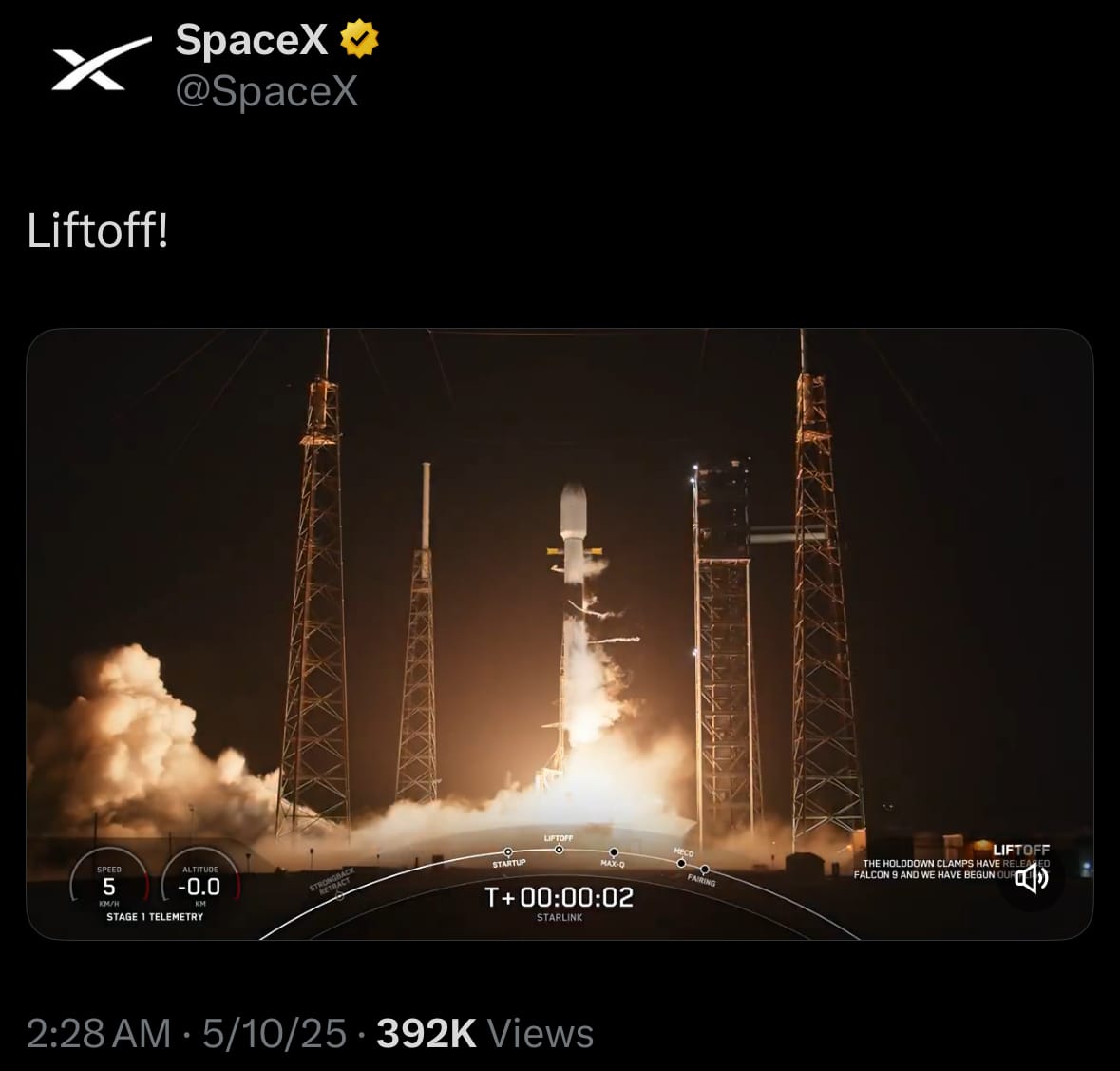
- On May 10, 2025, Starlink Group 6-91 launched at 2:28 a.m. EDT (0628 GMT) from Cape Canaveral Space Force Station, Florida. SpaceX’s Falcon 9 deployed 28 Starlink V2 Mini satellites, the 900th of 2025, with the booster landing on a droneship after its 14th flight.
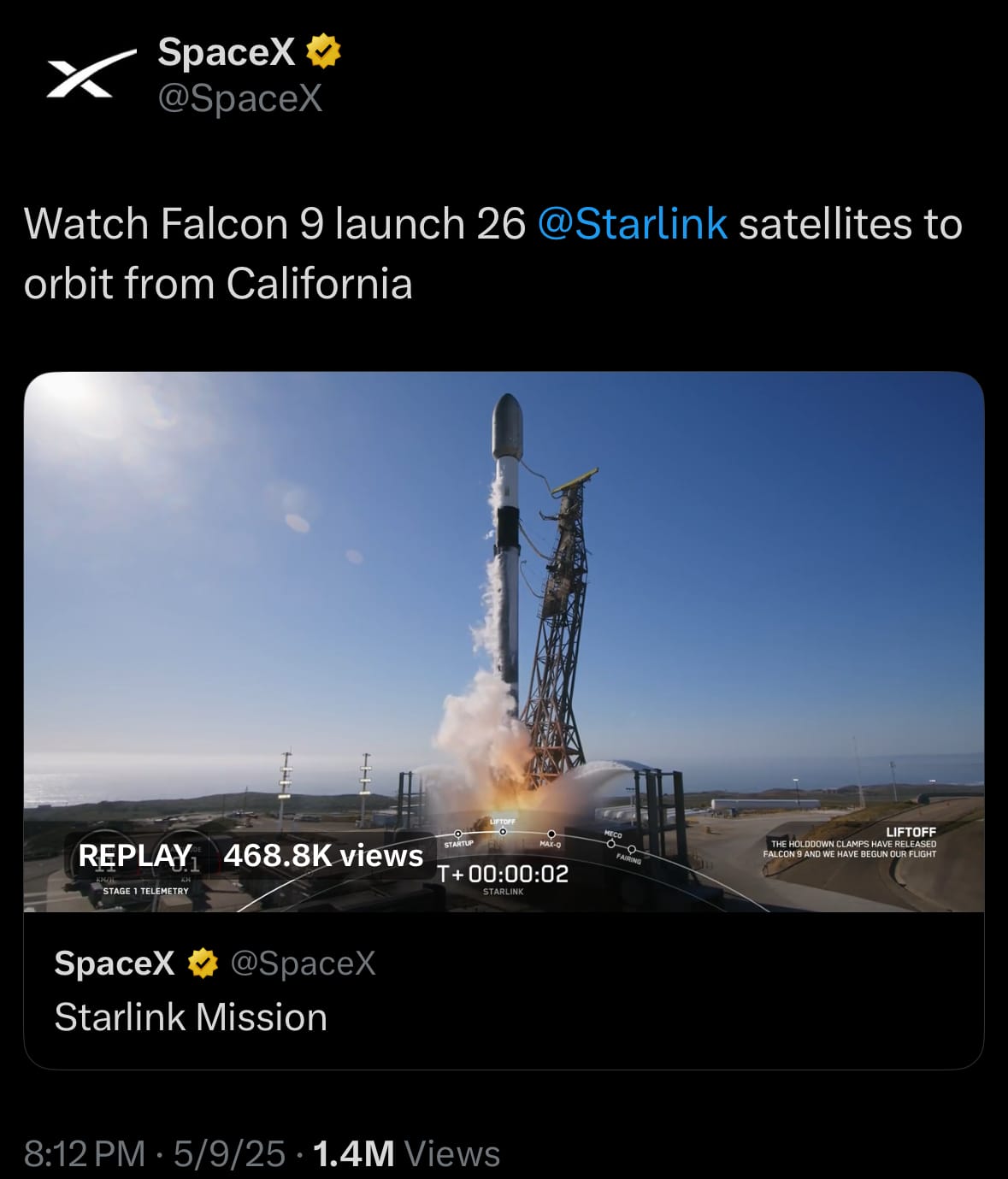
- On May 9, 2025, Starlink Group 15-3 launched at 8:03 p.m. EDT (0003 GMT, May 10) from Vandenberg Space Force Base, California. A SpaceX Falcon 9 sent 26 Starlink V2 Mini satellites into orbit, with the booster landing on a droneship after its 14th flight, following earlier delays.
Statistic:
- Largest assets on Earth by market capitalization:
- Gold: $21.992T
- 🇺🇸 Microsoft: $3.260T
- 🇺🇸 Apple: $2.965T
- 🇺🇸 NVIDIA: $2.846T
- Bitcoin: $2.061T
- 🇺🇸 Amazon: $2.049T
- 🇺🇸 Alphabet (Google): $1.863T
- Silver: $1.846T
- 🇸🇦 Saudi Aramco: $1.612T
- 🇺🇸 Meta Platforms (Facebook): $1.489T
- 🇺🇸 Berkshire Hathaway: $1.108T
- 🇺🇸 Broadcom: $978.94B
- 🇺🇸 Tesla: $960.68B
- 🇹🇼 TSMC: $915.52B
- 🇺🇸 Walmart: $773.84B
- 🇺🇸 JPMorgan Chase: $703.33B
- 🇺🇸 Visa: $675.35B
- 🇺🇸 Eli Lilly: $659.44B
- 🇨🇳 Tencent: $582.64B
- 🇺🇸 SPDR S&P 500 ETF Trust: $517.94B
- 🇺🇸 Mastercard: $516.37B
- 🇺🇸 Netflix: $485.24B
- 🇺🇸 Exxon Mobil: $462.46B
- 🇺🇸 Costco: $447.27B
- 🇺🇸 Oracle: $421.58B
History:
- Chemical weapons, leveraging toxic substances to harm or kill, have a history stretching from ancient times to the present. Around 600 BC, Athenians poisoned water supplies with hellebore during the Siege of Kirrha, while 4th-century BC Chinese texts document toxic smoke in sieges. By 1346, Mongols catapulted plague-ridden corpses at Caffa, possibly spreading the Black Death. The 19th century’s industrial advances spurred chemical weapon ideas, like chlorine gas proposals during the American Civil War (1861–1865), though none were used. World War I (1914–1918) saw their first large-scale deployment, with Germany’s chlorine gas at Ypres (1915), followed by phosgene and mustard gas, causing ~1.3 million casualties. The 1925 Geneva Protocol banned their use but lacked enforcement, allowing Italy to deploy mustard gas in Ethiopia (1935–1936) and Germany to develop nerve agents like tabun (1936) and sarin (1938).
- In World War II (1939–1945), chemical weapons were largely unused on battlefields due to deterrence, but Nazi Germany employed Zyklon B in Holocaust gas chambers. The Cold War saw massive stockpiling, with the U.S. and Soviet Union developing VX (1950s), while Egypt used mustard gas in Yemen (1963–1967) and Iraq deployed sarin and mustard gas in the Iran-Iraq War (1980–1988), notably killing ~5,000 in Halabja (1988). The 1993 Chemical Weapons Convention (CWC) banned production and use, eliminating 97% of declared stockpiles by 2023. Yet, violations persist: Syria used chlorine and sarin in its civil war (2013–2017), and Russia employed Novichok in the 2018 Skripal poisoning. From ancient poisons to modern nerve agents, the timeline of chemical weapons reveals escalating sophistication, punctuated by international efforts to curb their use, challenged by ongoing breaches and dual-use chemicals.
Image of the day:

Thanks for reading!
Earth is complicated, we make it simple.
Click image to view the Earth Intelligence System:
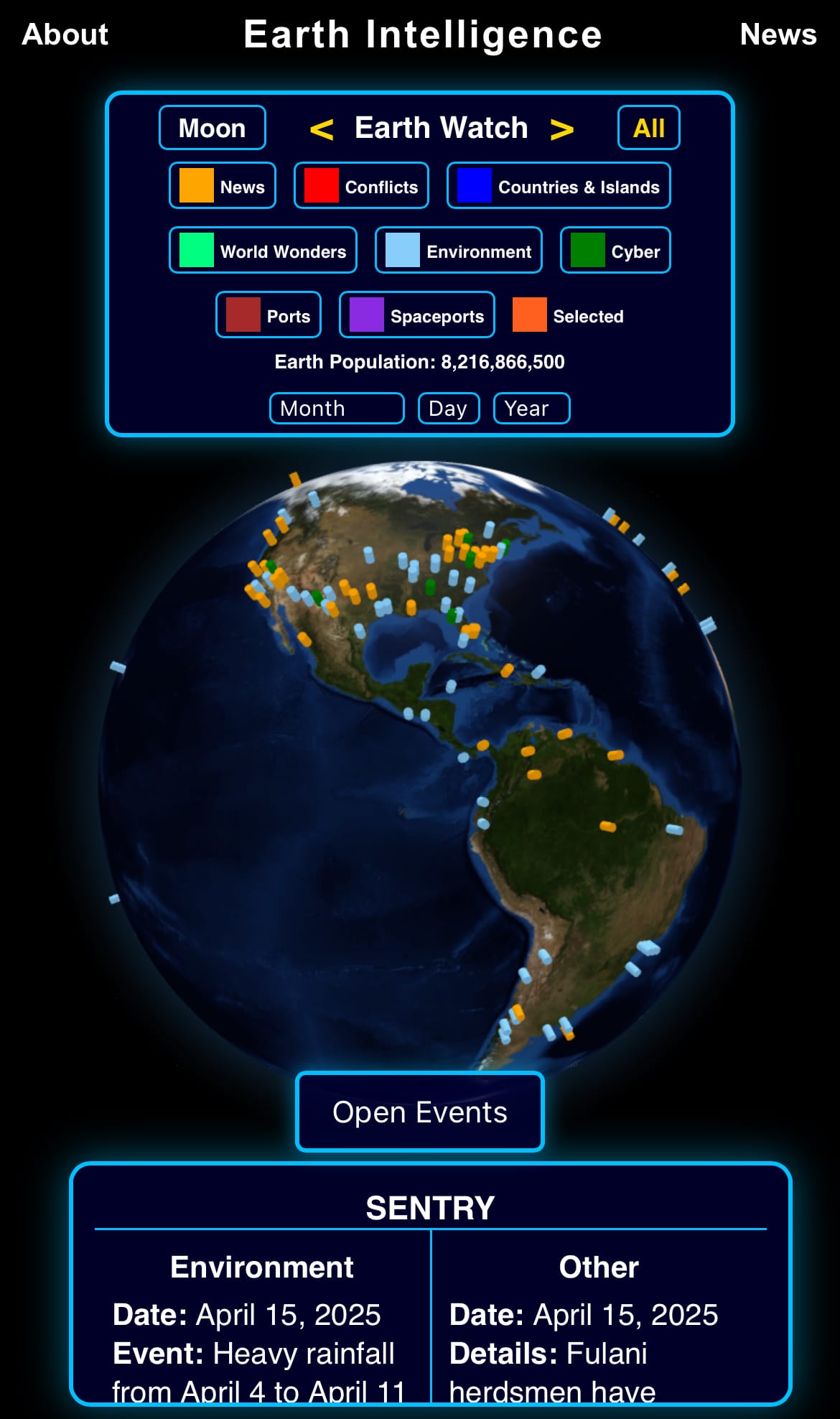


Support/Suggestions Email:
earthintelligence@earthintel.news




